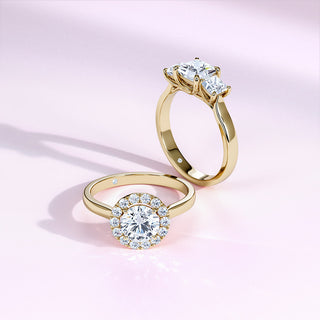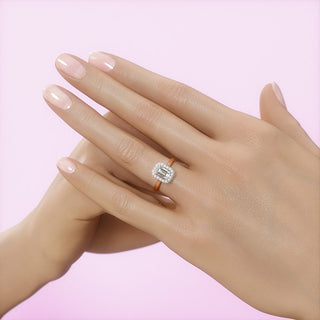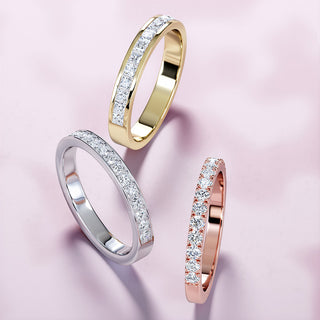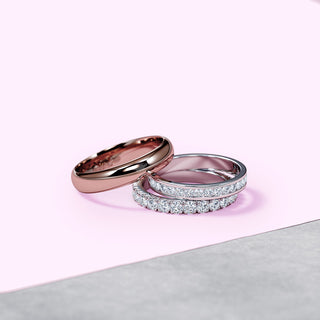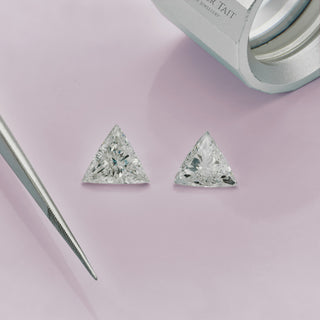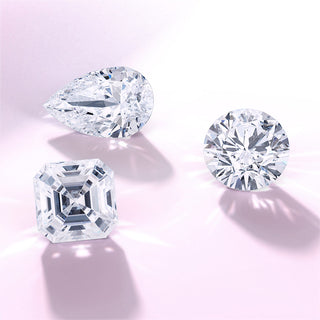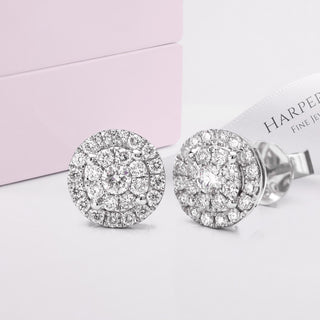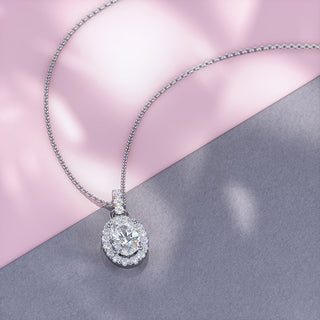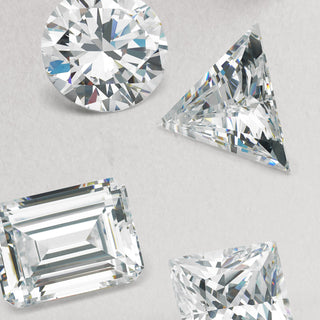What is a Round Brilliant Cut Diamond?
Iconic round brilliant cut diamonds are the most popular of all shapes. Circular in shape, the beautiful symmetry and incredible sparkle of a round diamond is irresistible. “Brilliant cut” is a term for a cutting style designed for maximum sparkle and brilliance. The round brilliant cut - sometimes written as RBC - is the classic shape in this style. The first round diamond was cut back in the 17th century, and the modern round brilliant cut has been perfected over the centuries. Technological advances have allowed lapidarists (diamond cutters) to design the perfect balance of facets to maximise the refraction of light within the stone.

How Many Facets does a Round Brilliant Cut Diamond have?
A round brilliant cut diamond has 58 facets, each one deliberately sized and angled for maximum brilliance.
What Makes a Round Brilliant Cut Special?
There’s no sparkle like that of a round brilliant cut diamond. Perfected over decades, the modern round diamond cut wows with fire and brilliance. This versatile cut looks wonderful in almost any engagement ring style, from a minimalist solitaire to a lavish diamond-set halo. The popularity of this beloved cut means you have plenty of choice in design. Choose a sleek modern engagement ring, a vintage-inspired style, or a meaningful multi-stone.
How do you Know if a Round Brilliant Cut Diamond is Well Cut?
Of the four Cs, diamond cut is one of the most important. Round diamonds are given a cut grade including poor, fair, good, very good, and excellent.
An individual diamond’s grade is a balance of numerous factors - the symmetry of the facets, the quality of the polishing, and the balance of size and depth.

Diamond graders have three main considerations when grading cut. The visual impact; how does the fire, brightness, and scintillation appear? The design; how well proportioned is the diamond?, and The craftsmanship; how skillfully has the diamond been cut and polished? There are numerous, specific proportions that indicate a well-cut round diamond. The overall cut grade is based on the balance of them all. Here are some of the key ratios to be aware of.
Table: The table is the largest, central facet of a stone. The table needs to be large enough to let lots of light into the diamond, but not so large that the upper facets don’t have room to sparkle. Look for a round brilliant cut diamond with table ratio between 52 - 60%.
Depth: A diamond’s depth is the top-to-bottom measurement of a diamond, from its table to culet. The depth ratio compares this measurement with the overall width of the stone. The depth affects the visual balance of a diamond and its brilliance. If a stone is too shallow or deep the light will not refract properly, escaping through the base of the diamond instead of the top. A deep or shallow diamond will therefore not be Look for a round brilliant cut diamond with a depth ratio between 59% – 62.5%
Choosing a Diamond Cut Grade
A round brilliant cut diamond glitters so wonderfully thanks to its symmetry and precisely cut facets. Perhaps the most important consideration when choosing a round diamond is the cut, so look for an ‘excellent’ or ‘very good’ cut grade.
You may have heard about “hearts and arrows” diamonds. These stones are cut so exactly that under magnification a symmetrical pattern can be seen - arrows if viewed from the top, hearts if viewed from underneath. While romantic, the hearts and arrows can’t be seen by the naked eye, so consider if the extra cost is worth it to you."
Choosing a Round Diamond Colour
Like so much about choosing a diamond, colour grade comes down to personal preference. Colour is graded by letters, with the scale starting at D. A colourless diamond grade is anything from grades D to F.
Most diamond lovers prefer the cool, white hue of a ‘colourless’ diamond, which is why these shades are so highly prized. For grades G and below the diamond colour gets progressively warmer, beginning to draw tones of yellow or brown. Some customers like these warmer shades, or find they can’t easily tell the difference in a yellow or rose gold ring.
If you have chosen a platinum or white gold setting, the difference between the white metal and a warmer colour stone will be more obvious, so we advise going no lower than a grade F.
Choosing the Clarity of a Round Diamond
Diamond clarity varies greatly, from perfectly clean stones to those with easily visible inclusions. Truly flawless diamonds are incredibly rare. Thanks to the dizzying sparkle of a round diamond, small inclusions are not as visible to the naked eye. It means you can choose a slightly included grade and still enjoy an eye-clean diamond. Which is to say, you will not notice any flaws without magnification.
We advise a grade between SI1 and VS2 for brilliant cut stones under 3.00ct. At these grades you will not notice any inclusions - only incredible sparkle! For very large stones, a higher clarity may be advised. Please contact us and we can talk through your options.
Is a Round Brilliant Cut the Diamond for You?
A round brilliant cut diamond is perfect for almost everyone, looking just as striking in a sleek, minimalist solitaire as a decadent, diamond-detail engagement ring. Round brilliant cut diamonds are also the classic choice for solitaire earrings and pendants, effortlessly stylish for every day and forever. And if you want sparkle above all else, a round brilliant cut diamond may be your ideal stone. Explore the collection here


